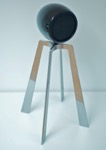
Originally Posted by
Anti K

Thanks! I feel I already looking a'bit that way, too...
Please advise - Your opinion. Below is 4367 graph - shortly, just ugly in mid-region.
Of cause, if active, it's not a question to EQ these drops.
/ I'm confused about D2430 driver, how bad they measure raw, without EQ.
It's like low end - when there is no capabilities, You can rise actively as much as You want, it its not capable...
it's like the story: You can feed the wolf as you want, bear's d*** is bigger anyway. /
How You feel, is that drop of 4367 becuse of 2216Nd-1 (not 2216Nd), or because of HF D2430 (not a smooth 4inch CD), or why? Just Your subjective thoughts.
I'm gathering this 'puzzle' together in my head.
When old-school, passive, then basically we 'pushed' all down to the lowest sensi part of whole system; then we got nice graph. By reduce.
Now, active, if some driver has -6dB drop, nobody starts to 'push down' all bandwith. Despite, we rise this driver's this region 6dB = kick in 2X more energy! And good, if the drop is only 6dB, not 12... and we ask, why this thing doesn't sound not as effortlessly and so on..
And one more thing: You name old-good 2123 mid cone.
What about newer designs 2262 , 2250, 2169 ?




 Reply With Quote
Reply With Quote








